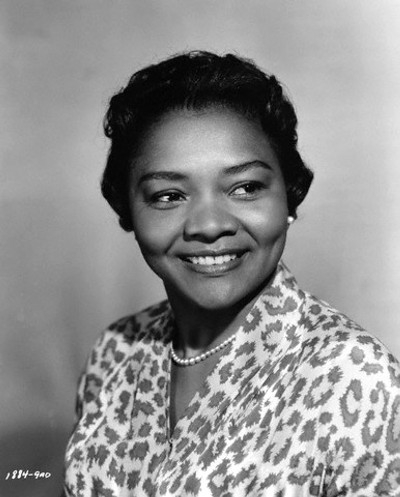In laying out the obstacles set by Hollywood’s segregated past, this heartfelt documentary makes a strong case for honoring a deserving performer with a star on the Walk of Fame
Kirk E. Kelleykahn’s heartfelt documentary “A Star Without a Star: The Untold Juanita Moore Story” builds the case for Moore — the director’s grandmother and an Oscar nominee, whose work spans eight decades — to be recognized on the Hollywood Walk of Fame. Made over the course of 19 years, the labor of love includes the insights and testimonials of actors such as Sidney Poitier and Louise Fletcher, who died before the film was completed. Despite a structure that briefly wanders in the movie’s later stages, the doc makes a very strong argument for Moore’s contributions.
Nowadays, films like “Hidden Figures” and “The Woman King” have widened the scope of screen roles available for Black performers. But “A Star Without a Star” occupies a different Hollywood, one where parts for Black female actors were largely limited to chorus girls and mammies. The film juxtaposes examples of Hollywood’s overtly racist past with the national mood of the day — civil rights protests including the March on Washington in the ’60s, Charlottesville and TV coverage of the George Floyd murder today — slyly commenting that for all the progress that has been made since those early days, so much more needs to be done.
Moore was a child when she moved to Los Angeles from the South with her family during the Great Migration after World War I. Inspired by a group of touring Black performers called the Lafayette Players, she went to New York in the 1930s and became a chorus girl at the Cotton Club in the time of the Harlem Renaissance. In 1935, when she was 21, she shipped off to Europe to play the London Palladium and did a stint at the Moulin Rouge. Her high-kicking dancing made her a sensation in Paris, and she remembers her time there as “the one place that I felt like a human being.”
Yet, Moore missed her friends and family in the States. She returned to L.A. and danced at the Cotton Club in Culver City while landing uncredited bit parts in Hollywood, mainly as a dancer. By 1937, she earned her SAG card, one of the first Black actors to become a member of the guild. She studied at the Actors Lab in L.A., alongside James Dean and Marilyn Monroe, but the group was accused of having communist connections by Sen. Joe McCarthy’s House Un-American Activities Committee in the late ’40s and was forced to disband. The doc draws a link to the committee and the policies of segregation, including bigoted quotes from gossip columnist and HUAC supporter Hedda Hopper.
Nevertheless, Moore continued to act. Her big break came in the 1959 remake “Imitation of Life,” directed by Douglas Sirk, who cast her alongside Lana Turner as a domestic with a light-skinned daughter who disavows her and tries to pass as white. Moore’s Annie shows a panoply of emotions that somehow settle on love. The film was Universal’s biggest blockbuster at the time, and the role earned Moore an Oscar nomination. “Her performance is very layered,” says Fletcher, who starred with Moore in 1988’s “Two Moon Junction.”
This article appears in its entirety at the website Variety. It can be read here.
